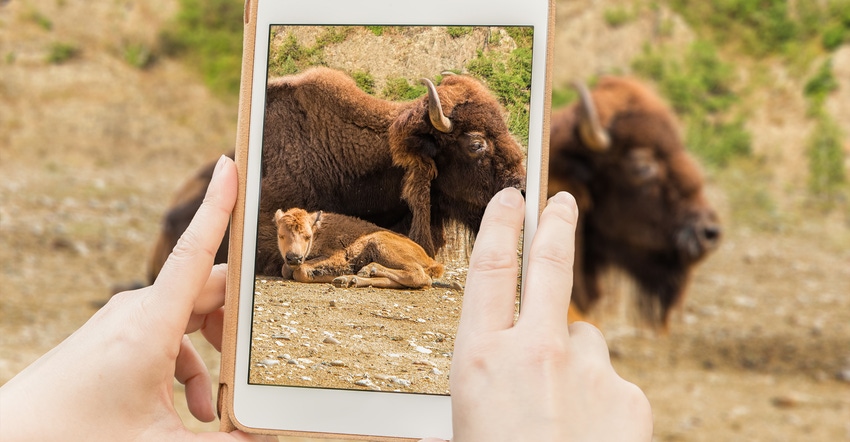September 17, 2020

Interaction among humans and wild animals can create tricky situations, especially if the wildlife perceives nearby humans as a threat. Yet the incidence of challenging human-wildlife interactions appears to be on the rise.
That’s showing up with curious but misguided wildlife watchers in national parks, some of whom found themselves on the way to the emergency room after an American bison took issue with being photographed.
A recent paper in Human-Wildlife Interactions, a journal published by the Berryman Institute at Utah State University, provides new insights on the relationship between distance-related, human-bison interactions and smartphones. Results of the paper indicate that people who always use a smartphone camera felt it was more acceptable to stand closer to bison than people who did not use one.
An adult bison can weigh in at nearly a ton and can run 35 mph. Their hooves and horns can be lethal. To avoid trouble, the National Park Service recommends that visitors stay at least 25 yards away from wild animals — that’s about the length of two buses — such as bison or elk. For bears, that distance climbs to 100 yards.
Miss up-close photo, stay uninjured
Although the dangers of human and wildlife close encounters are well-documented, humans seem unable to resist the temptation to try to get close to, or even touch, wildlife. Because of the rise of smartphone use, capturing those moments of “connection” has never been easier.
Many people hope to boost their social media with a shot of themselves “up close and personal” with the animals they have seen only on TV or in zoos. Although the intent is not malicious, these actions can place both people and wildlife in harm’s way. Additional concerns include people not understanding wild animal behavior, coupled with their inability to judge what constitutes a safe distance.
Here’s the key: Unless you are sure you can make it back to your car in less than 1.5 seconds, which is how long it takes a bison to run 25 yards, it’s best to take a step back. You may miss a great photo, but you will be passing up a trip to the emergency room.
Learn more about work on human-animal interactions at berrymaninstitute.org.
You May Also Like




